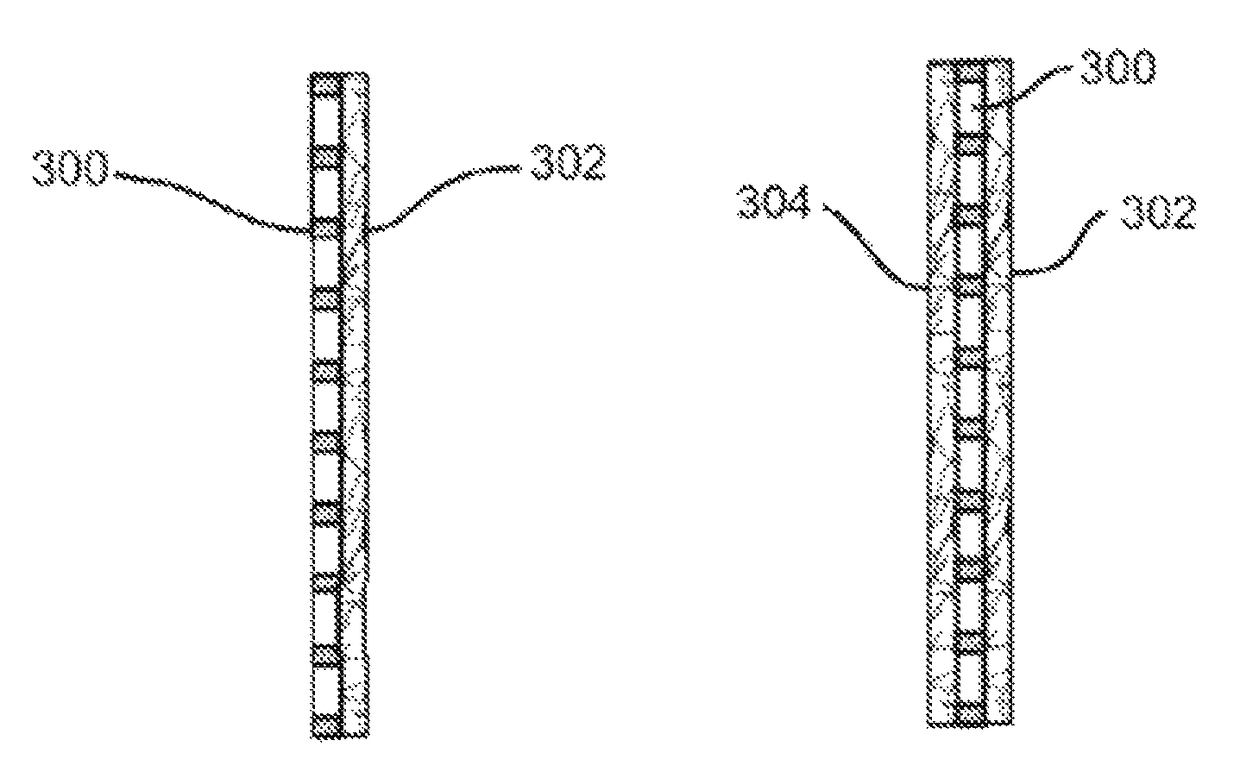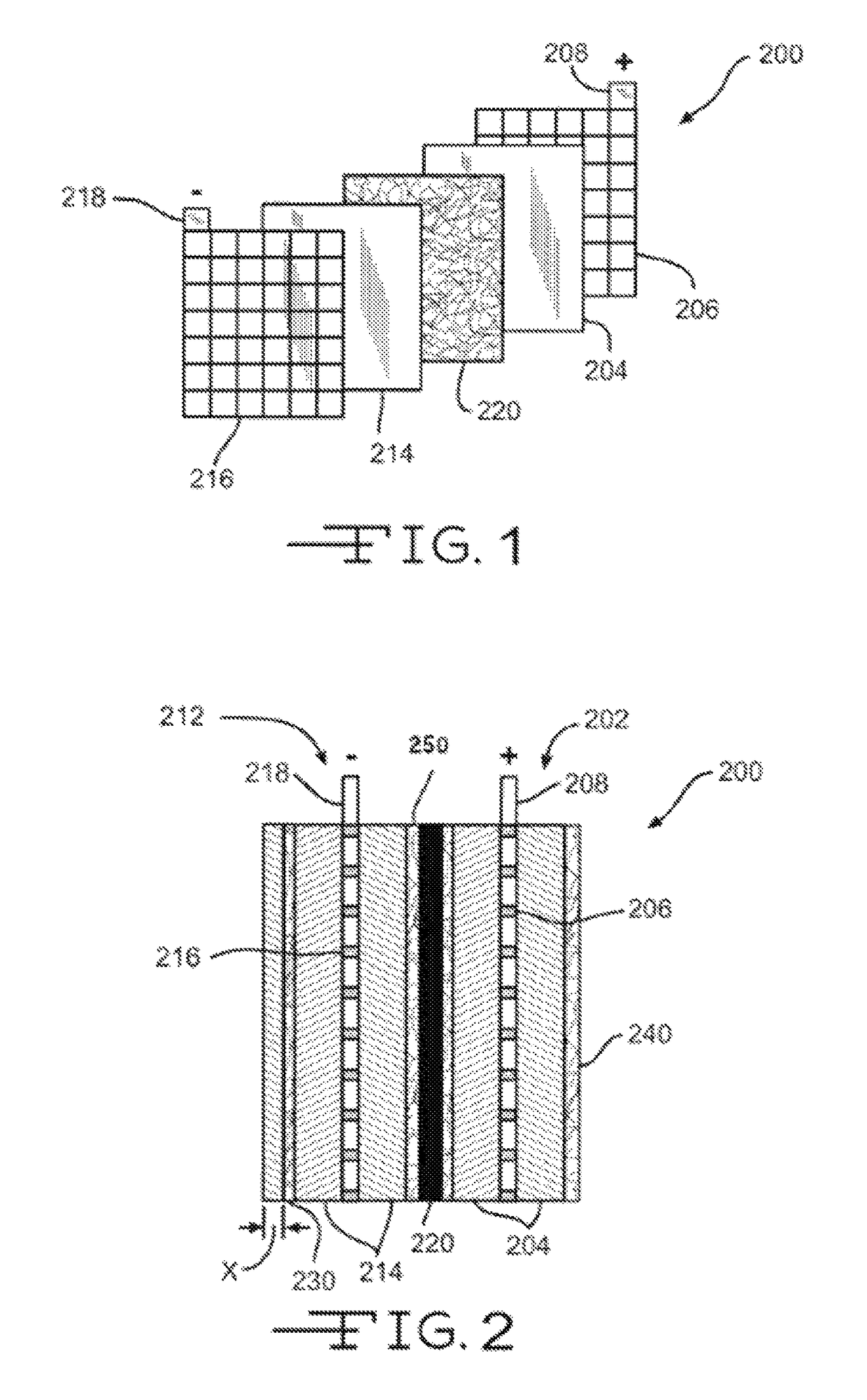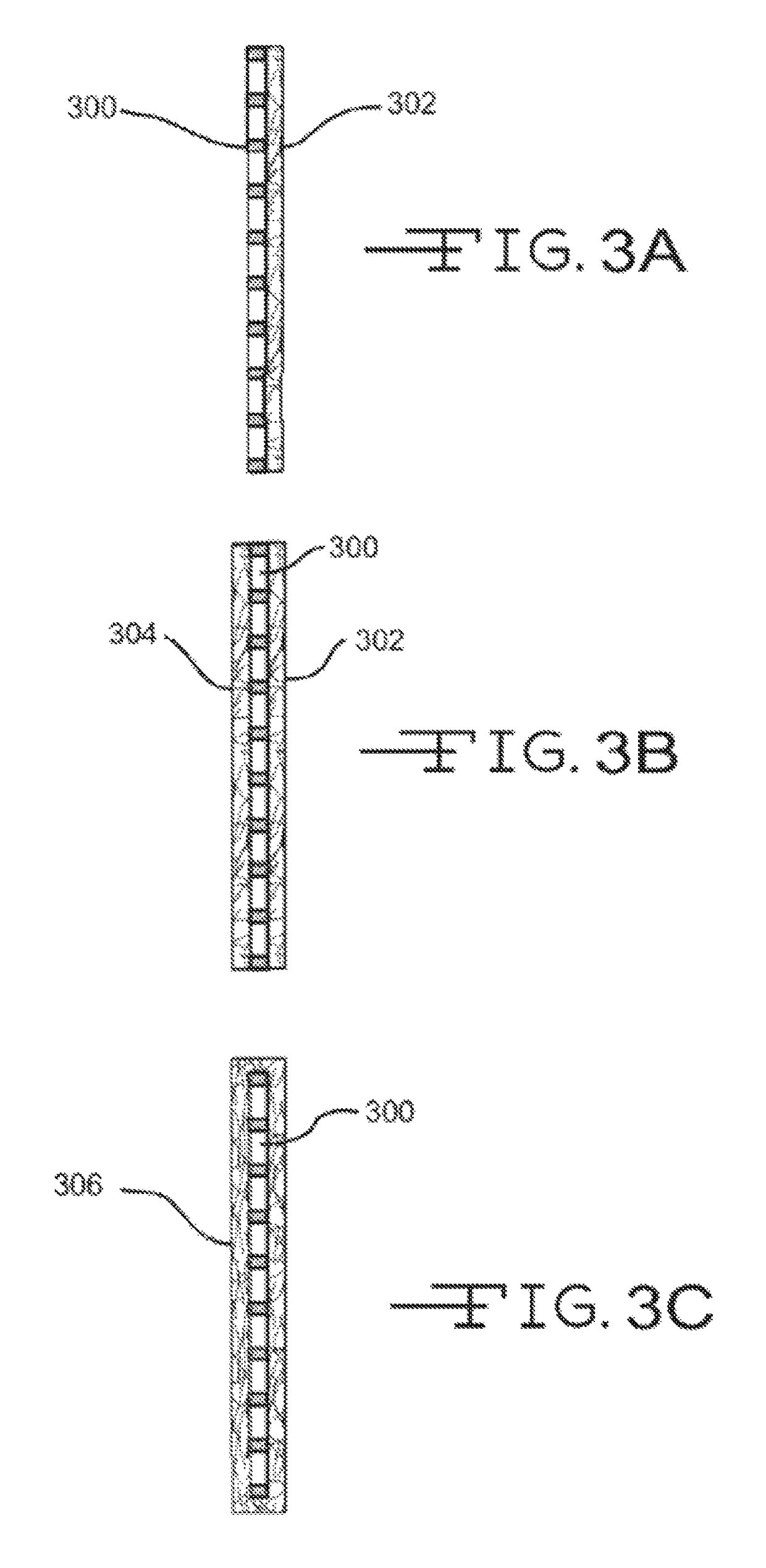Small pore size nonwoven mat with hydrophilic/acid resistant filler used in lead acid batteries and applications therefor
a technology of hydrophilic/acid resistant filler and nonwoven mat, which is applied in the direction of lead-acid accumulators, cell components, cell component details, etc., can solve the problems of negative electrode effects of repeated charge and discharge cycles, and achieve the effects of enhancing the life and performance of the battery, reducing air permeability and/or pore size, and improving the function of limiting shedding
- Summary
- Abstract
- Description
- Claims
- Application Information
AI Technical Summary
Benefits of technology
Problems solved by technology
Method used
Image
Examples
example 1
[0064]Nonwoven glass mat samples were made with a pilot wet-laid machine. Process water with pH greater than 5 was used. The following Johns Manville glass fibers were used: K249T with a nominal fiber diameter of about 13 μm and a length of ¾ inch; 206-253 with a nominal fiber diameter of about 0.765 μm; 210×-253 with a nominal fiber diameter of about 3.0 μm; and 8 μm / 8 mm C glass with a nominal fiber diameter of about 8 μm and a length of 8 mm. The compositions of the nonwoven fiber mats are shown in Table 1.
[0065]Air permeability was measured by the Frazier test, which is described by ASTM Standard Method D737. This test was usually carried out at a differential pressure of about 0.5 inches of water. Wicking strength per length or capillary rise was determined by ISO8787, with the wicking medium being 40 wt. % sulfuric acid. Thickness was measured with a gauge under pressure of 1.868 kPa or 10 kPa. Tensile strength of a 1 inch wide sample was measured using an ASTM method by an In...
example 2
[0069]Nonwoven glass mat samples were made with a commercial wet-laid machine. Process water with pH greater than 5 was used. The following Johns Manville glass fibers were used: K249T with a nominal fiber diameter of about 13 μm and a length of ¾ inch; and 206-253 with a nominal fiber diameter of about 0.765 μm.
[0070]Air permeability was measured by the TEXTEST™ FX 3300 according to ASTM Standard Method D737. This test was usually carried out at a differential pressure of about 0.5 inches of water. Wicking strength per length or capillary rise was determined by ISO8787, with the wicking medium being 40 wt. % sulfuric acid. Thickness was measured with a gauge under pressure of 10 kPa. Tensile strength of a 3 inch wide sample was measured using an ASTM method by an Instron machine.
[0071]Table 3 shows the compositions of nonwoven fiber mats along with results. Total tensile strength is normalized by the weight of the mat. The non-dimensionalized tensile strength is significantly highe...
example 3
[0073]Samples were measured for their Cobb60 degree as an indication of their hydrophilic or wickability properties. The following Johns Manville glass fibers were used: K249T with a nominal fiber diameter of about 13 μm and a length of ¾ inch; and 206-253 with a nominal fiber diameter of about 0.765 μm. In these experiments, a 1.1 lb / sq mat with 75% K249T and 25% 206-253 with 20% LOI were used. Both sides of samples—the binder rich side and the wire side—were measured. The results are shown in Tables 4 and 5.
[0074]
TABLE 4Binder-rich side Cobb60 degreeAbsorded amountAbsorded amountAbsorded amount (gSample(g)(g / m2)water / g mat)10.42420.7820.45450.8430.38380.7140.37370.6950.37370.6960.35350.6570.37370.69Average0.3938.710.72Std. Dev.0.033.500.07
[0075]
TABLE 5Wire side Cobb60 degreeAbsorded amountAbsorded amountAbsorded amount (gSample(g)(g / m2)water / g mat)10.43430.8020.47470.8830.41410.7640.41410.7650.45450.8460.45450.8470.39390.73Average0.4343.000.80Std. Dev.0.032.830.05
[0076]As illustra...
PUM
| Property | Measurement | Unit |
|---|---|---|
| diameter | aaaaa | aaaaa |
| diameter | aaaaa | aaaaa |
| pore size | aaaaa | aaaaa |
Abstract
Description
Claims
Application Information
 Login to View More
Login to View More - R&D
- Intellectual Property
- Life Sciences
- Materials
- Tech Scout
- Unparalleled Data Quality
- Higher Quality Content
- 60% Fewer Hallucinations
Browse by: Latest US Patents, China's latest patents, Technical Efficacy Thesaurus, Application Domain, Technology Topic, Popular Technical Reports.
© 2025 PatSnap. All rights reserved.Legal|Privacy policy|Modern Slavery Act Transparency Statement|Sitemap|About US| Contact US: help@patsnap.com



